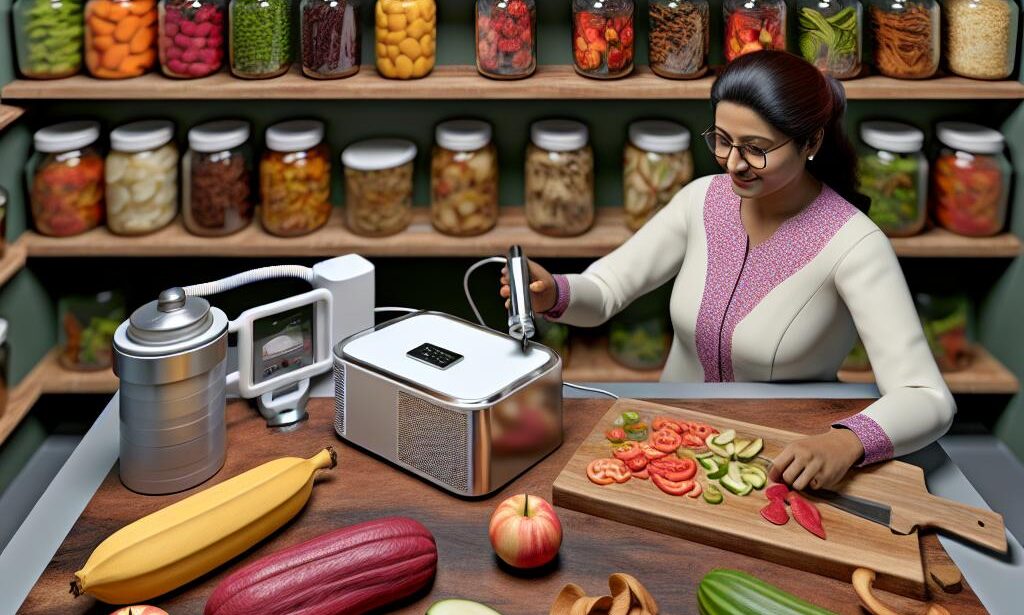In a world where <a href="https://foodprepstorage.com/preserving-your-harvest-canning-your-own-produce-guide/” title=”Preserving Your Harvest: Canning Your Own Produce Guide”>food waste is a growing concern, effective food preservation methods are essential in reducing the amount of food that goes uneaten. By utilizing proper techniques and tools, individuals can prolong the shelf life of their food and minimize waste. In this article, we will explore the importance of cutting waste with effective food preservation and provide practical tips for preserving food at home.
Table of Contents
- The Importance of Food Preservation in Reducing Waste
- Key Methods for Effective Food Preservation
- Tips for Properly Storing Fresh Produce
- Utilizing Freezing and Canning Techniques for Long-Term Preservation
- Innovative Technologies for Extending Shelf Life of Perishable Items
- Q&A
- To Conclude
The Importance of Food Preservation in Reducing Waste
Food preservation plays a crucial role in reducing waste and ensuring that food remains safe and edible for longer periods of time. By preserving food effectively, we can minimize the amount of food that goes to waste, ultimately saving money and resources. One of the key benefits of food preservation is that it allows us to extend the shelf life of perishable items, such as fruits, vegetables, and meats, reducing the likelihood of them spoiling before they can be consumed.
There are several methods of food preservation that can be used to cut down on waste, including:
- Canning: Sealing food in airtight containers to prevent spoilage.
- Freezing: Keeping food at low temperatures to slow down the growth of bacteria.
- Drying: Removing moisture from food to inhibit the growth of mold and bacteria.
By incorporating these preservation techniques into our daily routines, we can make a significant impact on reducing food waste and promoting sustainability in our communities.

Key Methods for Effective Food Preservation
Preserving food is a crucial aspect of reducing waste and ensuring that our resources are used efficiently. There are several key methods that can help you effectively preserve your food and make it last longer. By utilizing these methods, you can save money, reduce food waste, and always have fresh ingredients on hand.
One effective method for food preservation is canning. Canning involves sealing food in jars and then heating them to kill any bacteria that could cause spoilage. This method is great for preserving fruits, vegetables, and even meats. Another popular method is freezing. Freezing food can help retain its freshness and nutritional value for an extended period. By freezing items like meats, bread, and even cooked meals, you can ensure that they stay fresh until you are ready to use them.
| Method | Benefits |
| Canning | Seals in freshness |
| Freezing | Retains nutritional value |

Tips for Properly Storing Fresh Produce
Properly storing fresh produce is essential for reducing food waste and ensuring that your fruits and vegetables stay fresh for as long as possible. Here are some tips to help you effectively preserve your produce:
- Store fruits and vegetables separately: Fruits produce ethylene gas as they ripen, which can cause vegetables to spoil faster. Keep them in separate compartments in your fridge to prevent premature spoilage.
- Use breathable containers: Opt for containers that allow air to circulate, such as perforated plastic bags or containers with ventilation holes. This helps prevent moisture buildup and extends the shelf life of your produce.
- Check for ripeness: Store fruits and vegetables at their optimal ripeness to prevent them from overripening or spoiling too quickly. Use the following table as a guide:
| Fruit/Vegetable | Optimal Ripeness |
|---|---|
| Avocado | Firm, slightly yielding |
| Tomato | Firm, bright color |
| Spinach | Crisp, vibrant green |

Utilizing Freezing and Canning Techniques for Long-Term Preservation
When it comes to reducing food waste and ensuring that your groceries last longer, utilizing freezing and canning techniques can be incredibly effective. By properly preserving your food, you can extend its shelf life and enjoy fresh ingredients for longer periods of time.
**Freezing:** One of the simplest and most common methods of food preservation is freezing. By freezing fruits, vegetables, meats, and even prepared meals, you can lock in freshness and prevent spoilage. Make sure to properly package and label items before placing them in the freezer to maintain quality.
**Canning:** Canning is another great way to preserve food for the long term. Whether you’re making jams, pickles, or sauces, canning allows you to store food in airtight containers at room temperature. This method is perfect for creating pantry staples that can be enjoyed throughout the year.

Innovative Technologies for Extending Shelf Life of Perishable Items
When it comes to reducing food waste, one of the key strategies is to extend the shelf life of perishable items. Innovative technologies have been developed to help achieve this goal, allowing food to stay fresh for longer periods of time. By implementing these technologies, businesses and consumers can cut down on the amount of food that is thrown away each year.
One effective method for extending the shelf life of perishable items is through the use of modified atmosphere packaging (MAP). This technology involves altering the atmosphere inside the packaging to slow down the growth of bacteria and mold. By controlling the levels of oxygen, carbon dioxide, and nitrogen, MAP can significantly increase the lifespan of products such as fruits, vegetables, and meats.
Another innovative technology that is making waves in the food preservation industry is high-pressure processing (HPP). This method involves subjecting food products to intense levels of pressure, which helps to kill off harmful bacteria while preserving the nutritional content and flavor of the items. HPP is particularly effective for items like juices, deli meats, and seafood, providing a safe and efficient way to extend their shelf life.
Q&A
Q: What is food preservation and why is it important?
A: Food preservation is the process of preventing food from spoiling or rotting, in order to extend its shelf life. It is important because it helps reduce food waste, saves money, and ensures a stable food supply.
Q: What are some common methods of food preservation?
A: Some common methods of food preservation include canning, freezing, drying, pickling, and fermenting. Each method has its own advantages and is suitable for different types of food.
Q: How can effective food preservation help cut waste?
A: By properly preserving food, it can be stored for longer periods of time without spoiling. This reduces the likelihood of food being thrown away due to spoilage, ultimately cutting down on food waste.
Q: What are some tips for effective food preservation at home?
A: Some tips for effective food preservation at home include using proper storage containers, labeling and dating items, keeping track of inventory, and following safe food preservation practices.
Q: How can businesses benefit from implementing effective food preservation techniques?
A: Businesses can benefit from implementing effective food preservation techniques by reducing food waste, saving money on purchasing new ingredients, and improving overall efficiency in their operations. Additionally, businesses can also appeal to environmentally-conscious consumers by demonstrating their commitment to sustainability.
To Conclude
In conclusion, effective food preservation methods play a crucial role in reducing waste and promoting sustainability in our food system. By utilizing techniques such as canning, freezing, drying, and vacuum sealing, we can extend the shelf life of our food and minimize the amount of produce that goes to waste. By incorporating these practices into our daily routines, we can not only save money and reduce our environmental impact, but also ensure that we always have fresh, nutritious food available. So let’s all do our part in cutting waste with effective food preservation methods.

